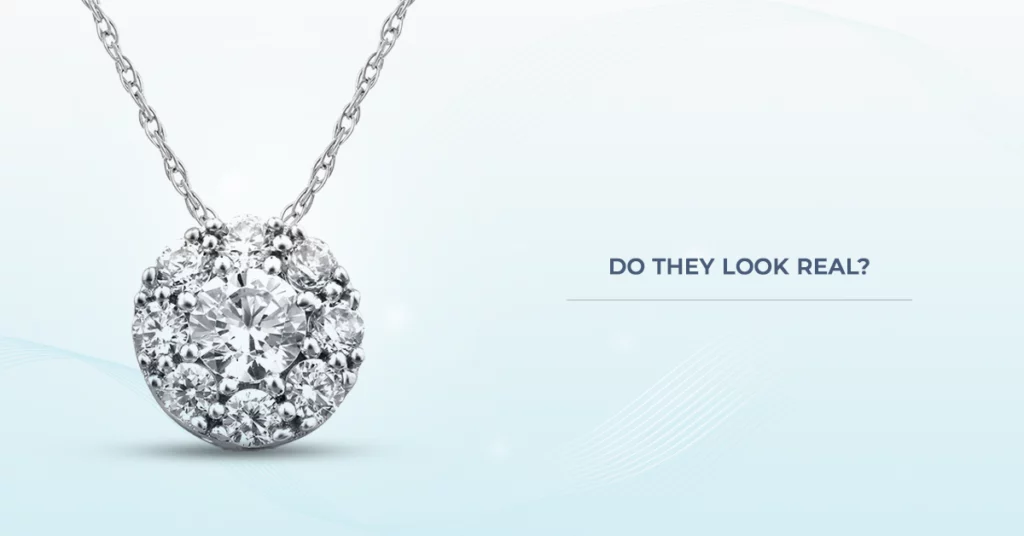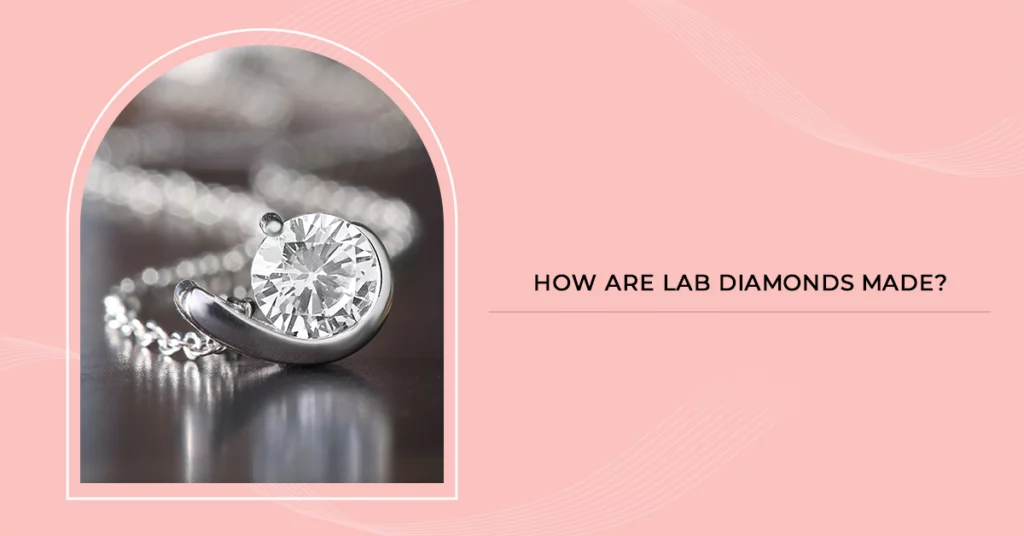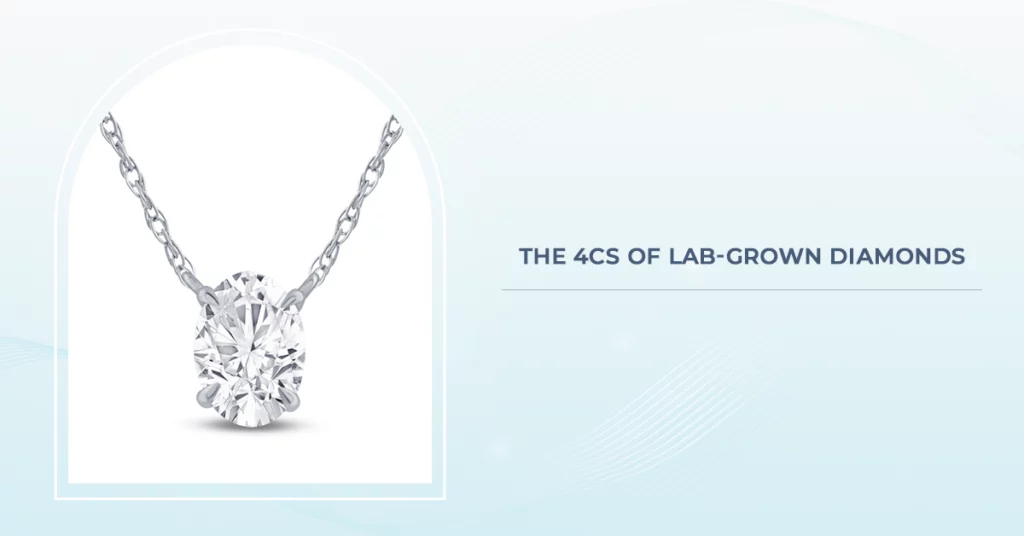
Lab-grown diamonds are all the rage these days. But should you consider buying a lab-grown diamond necklace for your loved one?
A hundred times, yes!
For one, they are 100% real. Unlike mined diamonds, they are also conflict-free and eco-friendly. It’s an incredible gift for someone who cares deeply about nature and human beings!

You might just fall in love with lab-grown diamonds for another great reason – cost!
A lab-grown diamond necklace might cost 30-50% less than its natural, mined counterpart. Even though both are identical in chemical properties and appearance, natural diamonds cost more because they are rare.
Mined diamonds take billions of years to form inside the Earth’s mantle, whereas synthetic or lab-grown diamonds take a few weeks under extremely controlled conditions.
So, if you’d love something more budget-friendly, a lab-grown diamond necklace is a brilliant choice. That’s why they are so popular with millennials. They prefer eco-friendly and budget-friendly options!

First things first, lab-grown diamonds are real!
What’s not real are diamond simulants like moissanite, Yttrium Aluminum Garnet (YAG), and cubic zirconia (CZ). They are optically, chemically, and physically different from lab-grown diamonds.
Not only is that difference apparent to the naked eye, but diamond simulants are also more vulnerable to wear over time.
To make things easier, let’s take one property, for instance.
On the Mohs Scale of Hardness, lab diamonds are rated 10, whereas CZ and moissanite rank 8.5 and 9.25, respectively.
So, to answer your question, lab diamonds look and feel 100% real because they are made of pure carbon – just like natural diamonds. They have the same shine and brilliance.
That should remove any concern you have about gifting a lab-grown diamond necklace to your significant other!
Natural diamonds aren’t called blood diamonds for no reason. Many of them are mined in war-torn areas and used to finance terrorism. Not to mention, innocent lives often suffer the consequences.
By purchasing a lab diamond, you can rest assured that they are conflict-free. Moreover, they do not cause devastation to our planet and its ecosystems.
The mining activity used to source natural diamonds:
Since there is no mining involved in lab-grown diamonds, they are your environmentally friendly alternative. No wonder it’s a thoughtful and beautiful gift for those ethically and environmentally conscious!

Are you curious about how the lab-grown diamond necklace you’re planning to purchase for your loved one is created in the first place?
Here’s how:
After they are created, the diamonds are cut and polished by high-tech lasers and master cutters.
And that’s how lab-grown diamonds are made – chemically, visually, and physically identical to a mined diamond, yet so much better in so many ways!

How do you determine the value and quality of any natural diamond?
Well, by evaluating the 4Cs defined by the Gemological Institute of America (GIA):
The diamonds are graded based on these 4Cs. Like mined diamonds, lab-grown diamonds also receive grading reports.
Major gem labs like the International Gemological Institute (IGI), Gemological Institute of America (GIA), Gem Certification and Assurance Lab (GCAL), and HRD Antwerp give these gradings.
Reputed online sellers of lab-grown diamonds like La Joya provide detailed information about cut, color, clarity, and carat weight. The website also has high-resolution videos and images of their coveted diamond jewelry.
This helps you view the entire diamond and see how well it interacts with light.
Now you know exactly why a lab-grown diamond necklace is a perfect gift for your ethically and environmentally conscious loved one!
Not only are lab diamonds a morally superior choice, but they are also less pricy than mined, natural diamonds. Who wouldn’t want such a thoughtful and incredible gift?
At La Joya, you’ll find stunning options for a lab-grown diamond necklace and tons of other jewelry like earrings and rings.
A lab-grown diamond’s chemical composition, optical properties, and physical properties are identical to a mined diamond. They are 100% real diamonds.
If you intend to resell a lab-grown diamond, there is a disadvantage because its resale value will decrease over time. However, if you intend to keep or gift the diamond, it will last forever – just like a natural diamond.
No, lab-grown diamonds do not fade or lose their shine over time. The two processes used to create these diamonds, i.e., HPHT and CVD, mimic the conditions inside Earth’s mantle to produce identical results.
Similar to mined diamonds, lab-grown counterparts require care to last a lifetime and even multiple lifetimes. That includes cleaning it regularly and protecting it from lotions and chemicals.
Since they are still real diamonds, lab-grown diamonds are pricy. However, they are less costly than mined diamonds and more expensive than diamond simulants like cubic zirconia.
Shop by metal
Shop by diamond
@ All rights reserved La Joya Jewelry Inc